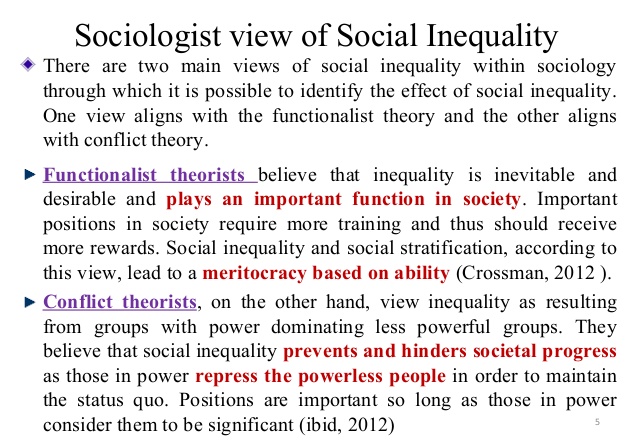Relevance: Sociology: Paper I: Social Stratification
Social inequality is a universal phenomenon in all societies. It can exist either in form of a hierarchy of groups or individuals or it may exist without the creation of a hierarchy. In the former case it is called social hierarchy. While in the latter case it is known as social differentiation for in almost all societies men and women are treated unequally. If social inequality manifests itself in the form of a hierarchy involving ranking of groups then it is known as social stratification, thus social stratification is a particular case of the social inequality. Social stratification is essentially a group phenomenon.
How many types of Inequality persists?
There can be two types of inequality:
- Natural and
- Man Made
- So far as the natural inequality is concerned with reference to age, sex, height, weight etc. the man made inequality may be horizontal or vertical e.g. different occupational groups perform different activities but when these groups become social groups in the sense that they are placed hierarchically and they have interaction within the group and at the inter-strata level, then such type of inequality is called social inequality
What are the Salient Aspects of Social Inequality:
- Social Inequality is the Result of Differentiation : All societies differentiate among their members. Some people who have certain characteristics are treated differently from other, people. Every society for that matter differentiates between the old and the young and between males and females. Society treats its members in different ways on various grounds such as skin colour, religion, physical strength, or educational achievement. The result of this differentiation is nothing but inequality.
- Social Inequality is Universal : In no society of the world all people have equal recognition. It is in this simple sense; inequality is universal in human societies. Thus, in all societies known to us, large or small, modern or extinct, there have been distinct differences in the statuses of the individual members.
Why Social Inequality is built?
- Social Inequality is Normally Built into the Social Structure : In all the modern societies, social inequality takes a much elaborate and structured form in which different categories of people have different statuses. In these societies, inequality is built into the social structure, and unequal statuses are passed down from generation to generation. Like the layers of rock, people in these societies are grouped into “strata”. People in anyone stratum have a different access to social rewards than people in any other stratum, so the society as a whole is said to be stratified.
How Social Inequality is a source of conflict and change?
- Inequality Is one of the most pressing social problems of the present day society. Throughout history, social inequality has been a source of tensions, revolutions and social change. It has generated bloody conflict between slave and master, peasant and noble, worker and capitalist, poor and rich. Ever since Karl Marx brought the issue of social inequality to the fore front of political debate with his Communist Manifesto in 1848, these tensions and conflicts have assumed global ‘importance. Social inequality is strongly related to various other problems of our society such as – social instability, economic ups and downs, political conflicts, potential violence, status insecurities, fear and uncertainties, and so on.
For more such notes, Articles, News & Views Join our Telegram Channel.
Click the link below to see the details about the UPSC –Civils courses offered by Triumph IAS. https://triumphias.com/pages-all-courses.php




Please one dimension of social inequality with appropriate demonstration explain it